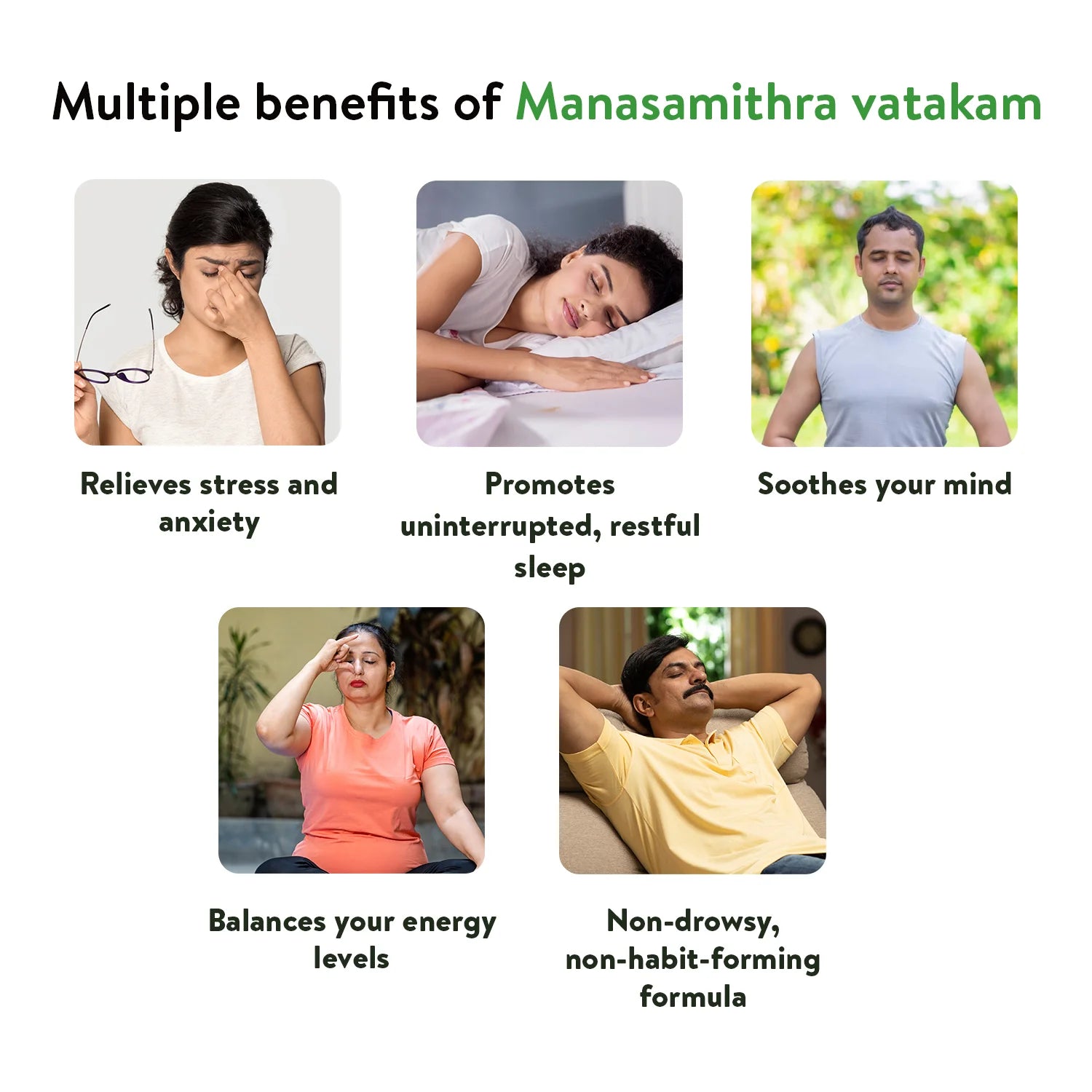Highlights
Some nights, no matter how tired you are, you just cannot sleep. Your body feels heavy, but your mind races, replaying conversations, planning tomorrow, or spiraling into thoughts you can’t seem to shut off.
When this restlessness becomes a pattern, it’s a sign that your system needs more than just sleep. It needs deep rest. Not the kind you get from quick fixes or short naps, but the kind that resets your nervous system and quiets your mind.
That’s where Yoga Nidra can help. This guided meditative practice brings you into a deeply relaxed state, somewhere between sleep and wakefulness, where the mind slows down and the body begins to heal. When paired with the grounding principles of Ayurveda, it becomes a powerful tool to support better sleep, mental clarity, and inner calm.
What Is Yoga Nidra?
Yoga Nidra, often described as "yogic sleep," is a guided meditation technique that leads you into a deeply relaxed yet conscious state. Though the body appears asleep, the mind remains aware, allowing you to access subconscious layers of thought and emotion.
This technique was modernized by Swami Satyananda Saraswati, who created a structured method based on ancient yogic principles. Through a combination of breath awareness, body scanning, intention-setting, and visualization, Yoga Nidra helps the nervous system reset, promoting both emotional balance and physical healing.
8 Steps to Practice Yoga Nidra
You don’t need prior yoga experience or special equipment. Just a quiet space, a mat or bed, and about 20-40 minutes of uninterrupted time is all you need.
Step 1: Settle into Stillness (Internalization)
Lie on your back in Shavasana (corpse pose), with palms facing up and eyes closed. Focus on your breath, allowing your senses to turn inward and your muscles to relax completely.
Step 2: Establish Your Sankalpa (Intention)
Form a short, positive affirmation about something meaningful to you, like “I am calm and grounded.” This Sankalpa becomes your anchor during the session.
Step 3: Rotate Awareness Through the Body
Gently move your awareness through different parts of the body, head to toe. This systematic scan helps release stored tension and heightens sensory awareness.
Step 4: Deepen Breath Awareness
Shift your focus to your breathing, notice the rhythm and depth, and pause between breaths. Let the breath slow naturally as your body relaxes more deeply.
Step 5: Explore Opposites
Bring awareness to opposite sensations, warm and cool, light and heavy, calm and anxious. This emotional balancing technique helps build resilience and clarity.
Step 6: Visualize Peaceful Images
Imagine calming scenes, such as waves lapping on a shore or a glowing sunrise. Visualizations allow the subconscious mind to process thoughts without stress.
Step 7: Repeat Your Sankalpa
Return to your Sankalpa, now planting it into your relaxed, receptive subconscious. This helps reinforce positive mental and emotional patterns.
Step 8: Return to Wakefulness
Slowly shift your awareness back to the body and surroundings. Begin to move gently. When you feel ready, open your eyes with a sense of calm presence.
How Does Yoga Nidra Work?
Although it may appear as simple relaxation, Yoga Nidra activates key processes in the brain and body:
- Brainwave Shift: As you relax, brain activity slows from active beta waves (thinking state) to more meditative alpha and theta states (relaxed and dreamy states), enhancing creativity and clarity. Some practitioners even reach a delta state (deep rest), linked to cellular repair and full-body restoration.
- Nervous System Reset: It stimulates the parasympathetic nervous system (rest-and-digest mode), which helps lower heart rate, blood pressure, and cortisol (stress hormone) levels.
- Hemispheric Balance: The rotation of awareness through different body parts helps synchronize the brain’s left and right hemispheres (logic and emotion), improving emotional regulation and memory.
- Subconscious Reprogramming: Repeating your Sankalpa (positive intention) during this deeply relaxed state allows it to settle into the subconscious mind (inner mental layer), helping to shift behaviors, emotions, or habits naturally.
What Are the Benefits of Yoga Nidra for Body, Mind, and Spirit?
Yoga Nidra is a full-body reset that touches every part of your well-being. Physically, it helps your body unwind and recover. Mentally, it brings clarity and calm. And on a deeper level, it opens space for spiritual growth. Here’s how this quiet, restful practice supports you from the inside out.
1 Physical Healing Through Deep Rest
When your body feels heavy with tension or your sleep is broken and restless, it’s often a sign that your system needs more than just rest; it needs restoration. Yoga Nidra helps relax the nervous system and encourages the kind of deep, healing sleep that supports repair.
To enhance this process, Ayurvedic foot massage (Padabhyanga) with calming oils like Ksheerabala Thailam can be especially helpful. Made with Bala to calm Vata, cow’s milk to nourish and balance, and sesame oil to ground and soothe, this traditional blend works beautifully to support deep rest and physical relaxation.
2 Mental Clarity and Emotional Balance
A racing mind, endless to-do lists, and emotional ups and downs can leave you feeling depleted. Yoga Nidra helps quiet the mental noise and brings in a sense of ease, making it easier to focus, retain information, and feel emotionally stable.
For ongoing support, Ayurvedic formulas like Manasamithra Vatakam complement the effects of Yoga Nidra. With herbs like Shankhapushpi to calm the mind, Bala to balance Vata, Ashwagandha to reduce mental fatigue, and Swarna Bhasma to regulate stress hormones, this classical blend helps maintain clarity, focus, and mood, even off the mat.
3 Spiritual Connection Through Stillness
In the Yoga Yajnavalkya Smriti, this journey inward is beautifully expressed:
“yathāsuptotthitaḥ kaścid viṣayān pratipadyate |
jāgraty eva tato yogī yoga nidrākṣaye tathā ||”
“Just like someone who has awakened from sleep becomes aware of the sense objects,
the yogin wakes up from that (world of sense objects) at the end of yoga nidra.”
This verse reminds us that the stillness experienced during Yoga Nidra isn’t just rest, it’s a kind of conscious awakening. With regular practice, you begin to disengage from the pull of the senses and access a space of deeper clarity and peace.
Suggested read: Ayurveda for Sleep: Enjoy Restful Sleep Everyday
How to Practice Yoga Nidra Daily for Better Sleep and Stress Relief?
You don’t need an elaborate setup or a huge time commitment to experience the benefits of Yoga Nidra. Just 15 to 20 minutes a day can make a real difference in how you sleep, feel, and function. The key is consistency and a space where you feel safe to fully let go.
Here’s how to gently build it into your daily rhythm:
- Pick a regular time: Right before bed or early in the morning works beautifully when your mind is naturally quieter.
- Set up a cozy space: Your bed, a yoga mat, or even a carpeted floor will do. Keep the lighting soft and the room peaceful.
- Try guided audio: Especially helpful if you’re just starting out. There are plenty of apps and YouTube recordings, including options in regional Indian languages.
- Start small: Begin with 10 minutes. As your comfort grows, you can explore longer sessions.
- Stick with it: The magic of Yoga Nidra lies in repetition. The more you practice, the deeper the benefits become.
Over time, it becomes less of a “task” and more like something your body and mind begin to crave.
What Makes Yoga Nidra So Powerful for Rest and Recovery?
Yoga Nidra is simple, but the science and stories behind it are anything but ordinary. Here are a few things that might surprise you:
- An hour of Yoga Nidra is said to equal four hours of sleep in terms of restfulness. That’s the kind of deep recharge it offers.
- You don’t need to be flexible. No yoga poses here, just lie down and let go.
- It’s used in trauma recovery. Therapists and wellness practitioners now recommend Yoga Nidra to help people process PTSD, anxiety, and emotional distress.
- Backed by science. Studies show it improves sleep quality, lowers stress hormones, and supports emotional balance.
It’s rare to find a practice that’s so simple, yet so deeply transformative. And the best part is that it is available to you anytime you need it.
Conclusion
From easing physical tension to calming a restless mind and nurturing inner awareness, Yoga Nidra supports well-being on every level. Whether you're struggling with sleep, stress, or simply seeking more balance in your day, this simple practice creates space for true rest and renewal, without needing hours of effort or complex routines.
To enhance your experience, Kerala Ayurveda offers time-tested support rooted in classical formulations. Calming oils like Ksheerabala Thailam and mind-soothing blends such as Manasamithra Vatakam can deepen the effects of your practice, helping you unwind, sleep better, and feel more grounded. Bring the wisdom of Ayurveda into your Yoga Nidra journey and create a daily ritual of rest that restores from the inside out.
FAQs
1. Can I practice Yoga Nidra if I’ve never done yoga before?
Absolutely. Yoga Nidra requires no prior experience, flexibility, or movement, just a willingness to lie down and listen.
2. What’s the best time of day to do Yoga Nidra for sleep?
Practicing right before bedtime helps calm the mind and body for restful sleep. Early mornings also work well if you're using it to reduce stress or anxiety throughout the day.
3. Is it okay if I fall asleep during Yoga Nidra?
Yes. While the goal is to remain aware, falling asleep is common, especially when your body is deeply relaxed. With regular practice, you’ll gradually stay more conscious during the session.
4. How often should I practice to see results?
Even 10-20 minutes daily can make a noticeable difference in your sleep, stress levels, and mental clarity. Consistency is more important than duration.
5. Can Ayurvedic products really enhance my Yoga Nidra practice?
Yes. Ayurvedic oils like Ksheerabala Thailam promote deep relaxation, especially when used in foot massage, while classical formulations like Manasamithra Vatakam help calm the mind and support better sleep patterns.










